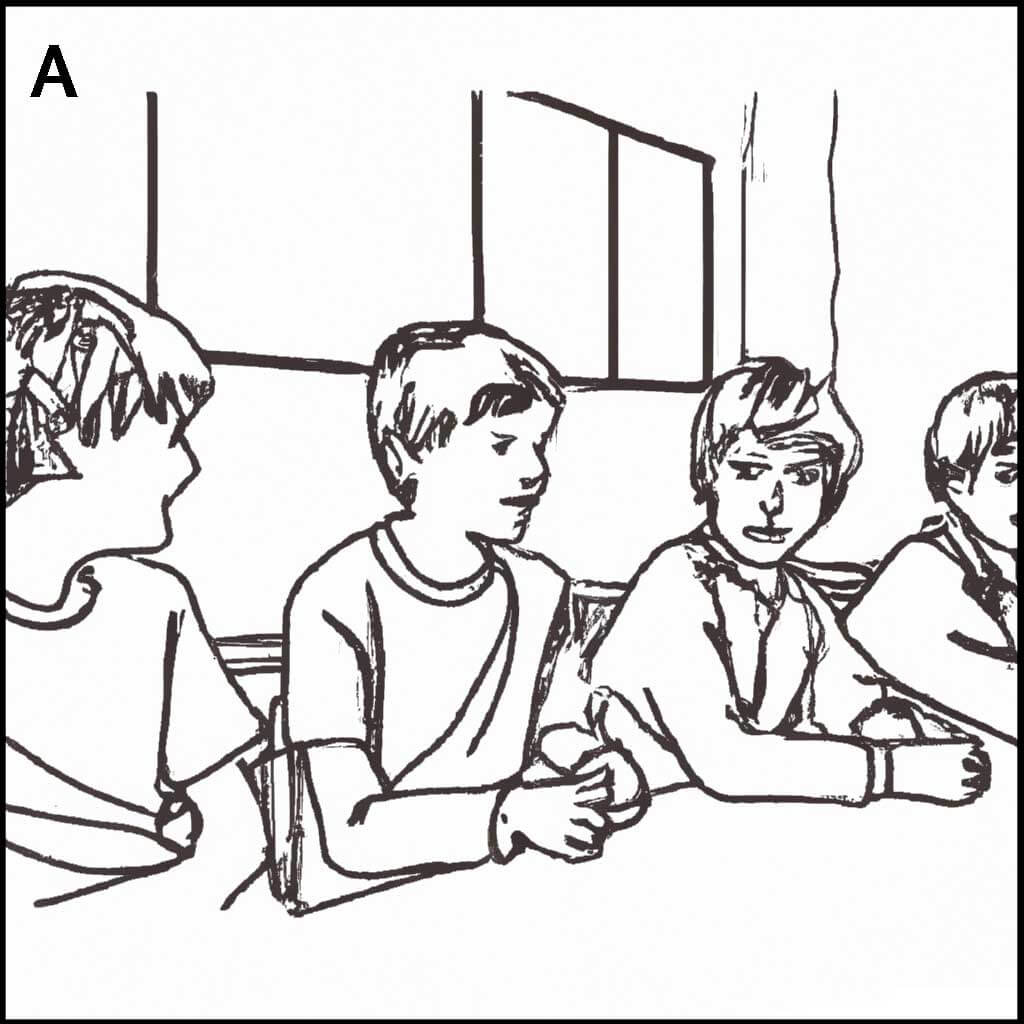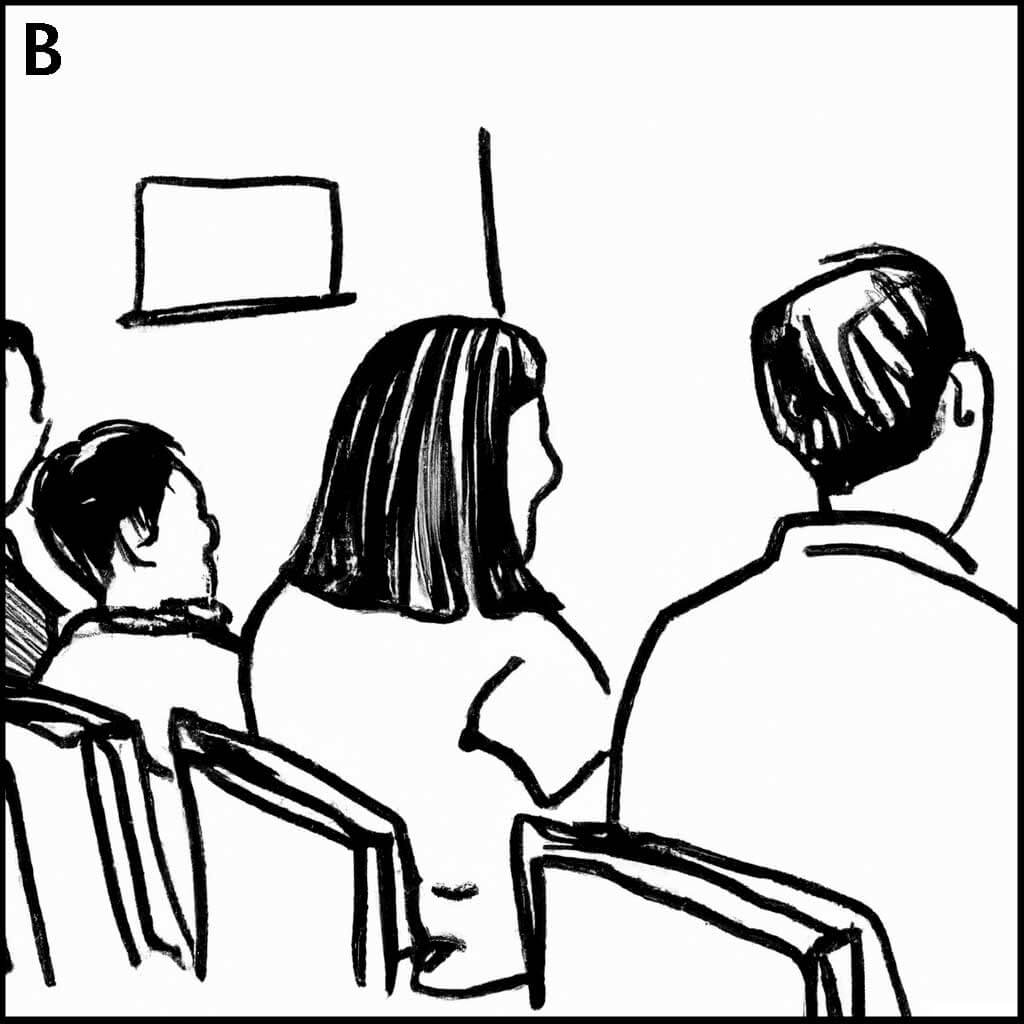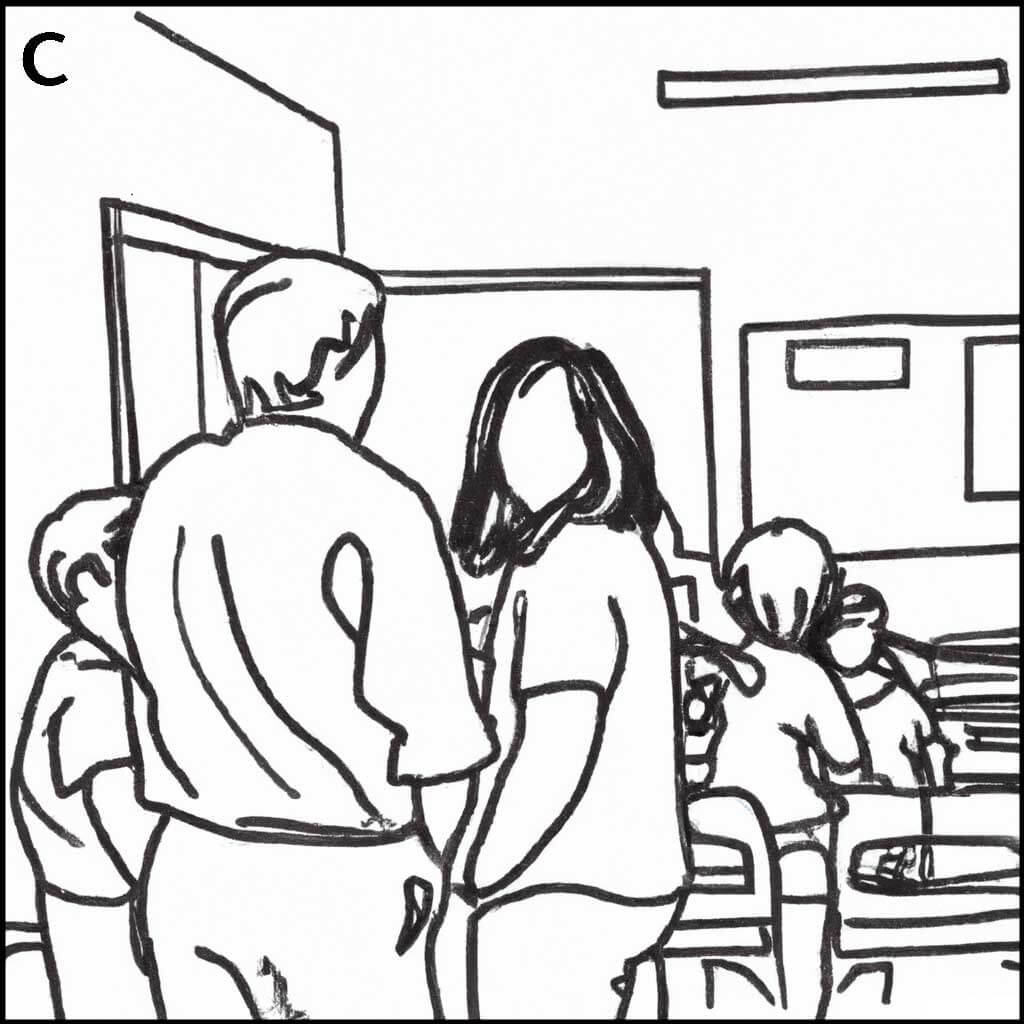From A1 to B1: Navigating the FIDE Exam for Residency in Switzerland

Everything You Need to Know About the Swiss FIDE Exam
If you’re a non-Swiss resident in the French-speaking region of Switzerland, the FIDE exam’s likely on your radar. This examination holds significant importance for those seeking to establish residency in Switzerland.
In this guide, we cover the essentials of the FIDE exam: its purpose, when and where to take it, required language levels for different permits, and how you can prepare for the exam.
Table of Contents

FIDE Exam – What is it?
The FIDE exam, short for “Français, Italiano, Deutsch en Suisse,” is a mandatory language assessment for non-Swiss individuals looking to settle in Switzerland.
The exam evaluates language proficiency from A1 to B1 levels, aligned with the canton’s official language.
It tests your ability to communicate effectively (spoken, comprehension, writing, reading) in daily scenarios, such as making appointments, handling administrative tasks, asking for directions, and engaging in casual conversations.
Developed on behalf of the State Secretariat for Migration (SEM), the FIDE exam ensures newcomers possess the language skills needed for integration into Swiss society and local life.

What type of test?
The FIDE test’s been created to adapt, as much as possible, to your background and personal situation in Switzerland. This is to say that the examiner will try and orient the oral exercises to your experience in the country.
For example, if you live in an apartment building, they may ask you about arrangements in shared spaces such as the laundry room. In contrast, if you live in a house in the countryside, they won’t ask you such questions as you may not be familiar with this aspect of Swiss life.
In this sense, the examination’s inclusive of people from different professional, socioeconomic, and educational backgrounds.

Language Passport and Eligibility
FIDE test results are documented in a Language Passport, a crucial document for permit renewal or application.
Individuals over the age of 16 are eligible to take the test.
What language do I need to pass?
The cantons around Lake Leman, such as Geneva and Vaud, will require you to pass the French FIDE exam. If you live in a bilingual canton, you may have the choice of what language you’ll want to pass the test in.
Disabilities
Special accommodations are available for those with disabilities such as dyslexia or dysgraphia. Arrangements vary based on individual needs.
If you have a disability, you should inform the examination center before the test. Special rules agreed upon between the examination center and the FIDE secretariat will apply.

How do you register, when, and where?
The latest you can register is 15 days before the exam date. Due to high-demand and limited spots, early registration is recommended.
The exam’s divided into two: a combined oral & comprehension test, and a combined written & reading test. You can choose to take either or both.
How and where: The examination centers are listed on the FIDE website. You can access the list using the following link. The centers can be sorted by canton.
FIDE exam Geneva: Filter by selecting Geneva “GE” canton.
Price
As of August 2023, the complete test costs 250 CHF. Taken individually, the written test costs 170 CHF, and the oral test 120 CHF.
How long does it take?
The oral test lasts around 40 minutes, while the written portion takes approximately 60 minutes.
Note: you’ll be requested to arrive before so that the examination can start on time.
When do you receive your FIDE test results?
You’ll receive your FIDE test results by post in about four weeks after the examination.

I have another French language certification. Is it recognized?
Recognition depends on factors such as certification type and validity.
The SEMs published a list of recognized certifications and conditions. It’s important to consider the type of permit (B, C, Naturalization) when looking at the conditions. You can use a valid certificate to have a Swiss Language Passport issued for 20 CHF.
If you have any doubts, contact the cantonal office that requested the FIDE test. Make sure to specify the type of permit renewal you need the certificate for.
List of alternative certifications
Unfortunately, the PDF hasn’t been translated to English.
Certifications recognized by SEM:
| Certification body | Test name | Levels |
|---|---|---|
| State Secretariat for Migration (SEM) | FIDE | A1 to B1 level |
| France Éducation inter-national (formerly CIEP) | DELF | A2 to B2 level) |
| France Éducation inter-national (formerly CIEP) | TCF | A1 to C2 level |
| Paris Chamber of Commerce and Industry (CCIP) | TEF | A1 to C2 level) |
| Paris Chamber of Commerce and Industry (CCIP) | DFP Affaires | A1 to C2 level |

Your certification’s not on the list.
If your certificate’s for the A1 or A2 levels, the best is to take the FIDE test or one of the above-mentioned accredited tests.
If your certificate’s for B1 and above, you may qualify for the “FIDE dossier.” This is a separate examination to prove that you’re at a B1 level. It only tests the B1 level, so if you fail, you get no certification, and if you get a better result, you still only get a B1 certification.
Note that the canton may only accept a French diploma if you’re in a French-speaking canton. So, even if you have a higher-level German or Italian certification, this may not be accepted.
People exempt from taking the FIDE test.
The SEM publishes a list of people who are exempt from doing the test. Notably, people from countries where the requested language is their national language, people having done their schooling in the language, people having worked in the language, etc.
PDF published by SEM with FAQ concerning exemptions:
These exemptions are sometimes accorded on a person-to-person basis and may require documents of proof.
Example: We had the case of someone calling our offcie (My Linguistics School) for information on the FIDE test who was fluent/bilingual in French. He had done his Baccalaureate in a French-speaking school many years ago. However, he lost the certification and now needed to do a French test to prove his level, despite clearly speaking French.

Different parts of the test
A combination of points from the oral and comprehension sections gives the overall result of the “Speaking” section.
All participants first start with the oral examination. The oral section of the exam always begins with A2-level tasks. After assessing your A2 level, the examiner then recommends either continuing with level the FIDE A1 or FIDE B1 level. They explain the consequence of the choice to the participant. This said, the final decision of continuing to A1 or B1 rests with the participant.
You then take the comprehension section of the exam. The level’s based on the chosen combination from the oral section (so A1-A2 or A2-B1). The result obtained in the oral section counts for two-thirds of the results of the “speaking” section of the exam, and those of the comprehension section, for one-third.
The written and reading part of the exam is done after the spoken one. Unlike the Spoken section, you must choose whether to do the FIDE A1- FIDE A2 test or the FIDE A2- FIDE B1 test from the start.

Oral
Independent of the different levels tested, there are always two examiners in the room, one with whom you speak, the other who notes down results. At the end of the exam. The two examiners agree on the final assessment.

Example: For an A2 test, you’ll be shown an image with a situation on it. This could be of a person waiting next to a train looking at their watch. The person’s speaking to someone by phone. In a bubble image, we see someone waiting next to an apartment building.
The examiner will set the context of the conversation for you. They may say that you’ll discuss apartments and then ask you a series of questions. They may ask you to describe what you see in the image and what you think may be happening.
Then they’ll continue with a role-playing exercise. They could tell you that you’re the person waiting for the train, and they’re the person who managed the apartment building (the régie). The exercise will consist of a casual conversation where they’ll test your ability to hold a simple conversation with the people who manage your appartement.
Finally, they may ask you general questions about life living in an apartment.

Comprehension
In this section of the exam, you will have the opportunity to listen to a collection of audio clips. Accompanying each clip will be an audio-based question, along with a set of multiple answers displayed as a sequence of three images. Your task will be to identify the accurate answer by choosing one of the three images associated with each question.
Example for an A1 type of question: you may get an audio clip of a teacher speaking to students and parents during school orientation day. The teacher will introduce themselves and then thank the parents for sitting at the back of the class. Then, the teacher may give some instructions to the children.
Following the audio, you’ll then hear a question. This could be “What do the parents need to do?” In image A, you’ll see children sitting, in image B, you’ll see parents sitting at the back of the class, in image C, you’ll see the teacher speaking with a parent. You need to select the correct image, in this case image B, and continue the exam.
A2 audios will present you with further information. But normally quite straightforward. As you progress to B1, the audios may include small traps like negatives or double negatives that can disorient you.




Written exam
First, don’t worry too much about this.
Yes, there’s a written exam, but it’s created to test your general understanding of the questions asked and the overall form of writing. The exam doesn’t attribute many, or any in some cases, points to spelling or grammar. The test evaluates whether you can understand the questions asked and write down, even incorrectly spelled, the answers.
For example, you may be asked to read an invitation sent out by your commune for a barbecue to celebrate the first of August. The invitation will include general information such as the date, the time, and contact information. There may also be a section requiring people invited to rsvp.
The examiner will then present you with a situation. It may be an email or a text message with a friend. There will be questions asking you what day the event’s on, at what time, where etc. The person taking the exam will have to fill them out.

In higher levels, you may be presented with a situation, and you’ll be asked to write a short letter / email.
For example, you’re requesting a recommendation from your old apartment manager (régie). You’ll be asked to include your contact information and date of birth, indicate when you lived there and when you left, explain what you want, and sign off politely.

Reading
The reading section, integrated to the writing one, will test your comprehension of a series of texts.
For example, you’re applying to a language school, and you’ve received some information with detailing levels, prices, and dates. You’re given a series of short texts, each with a question and multiple answers. You’ll then be asked to read through the text and choose one of the multiple question answers.
Finally, this section may finish with another written test asking you to write an email to the language school requesting additional information. The question will indicate some elements that you need to include in your email such why you’re writing, what you find important in a language course, refer to the information that the school sent you in the previous section etc.
FIDE sample exam
You can find a copy of the FIDE sample exam online on the FIDE site. There’s only one example of the FIDE language test.
You can download the different sections and the accompanying audio.
Suggestion: Print it off for the writing and reading section or do the writing part on a program without auto-correct. The exam is done with paper and pen, so you can’t use autocorrect on the exam day.

Required Levels for Different Residence Permits
The required language proficiency varies depending on the permit type. Some cantons, especially German ones, heighten the requirements. However, the cantons of Vaud and Geneva maintain the minimum requirements. Here’s an overview of the levels required for permits in Geneva and Vaud cantons.
Preparing for the FIDE test

How long can it take to get an A1 / A2 / B1 Level?
*Disclaimer – The following part is some shameless self-promotion for our language center:
If you’ve moved to Switzerland with an absolute 0 level in French, you’ll either need to do a course to help you acquire the required language or try and train on your own. For people who don’t work in a French-speaking environment and whose social circle’s primarily non-French-speaking, self-learning may be complicated, although not impossible.

My level’s not bad, but I’d like some help preparing for the exam.
You already have a certain level but want help preparing for the exam. This is normal. It’s nice to go into the exam ready for the types of questions you’ll be asked, and to understand the structure correctly.
We can help you with a 2-hour consultancy to test and examine your level, and provide suggestions to succeed in your examination.
If you want more practice, we can sit down and plan a personalized language course for the hours you wish, from as few as 2 hours.

40 hours from 0 to A2:
It’s usually possible to attain a written and spoken A2 level in approximately 40 hours through a semi-intense course. For the FIDE A1 oral test, we recommend at least 30 hours of study. However, we recommend that you prepare for the FIDE A2 test. Overall, it doesn’t take much longer to prepare for this, and if you attain a FIDE A2 on the first try for your Swiss B permit, you can use this when applying for the Swiss C permit (the standard one) a few years later.
Learning a language is a process, and our brain needs time to process and assimilate information. We suggest 3 hours courses a week (3×1 hour classes) over three months to finish 40 hours. It’s possible to do more courses a week, but if you’re not in a work or social environment where you’ll use the language, it’s better to take it slower and get more substantial results in the long term.
Note* the article specifies the FIDE A2 test or FIDE A1 test as the FIDE test requirements differ from those for the DELF/DALF A2 or A1 language test.

40 hours from A2 to B1:
As you progress, so does the time needed to improve your fluency to the next level. When we speak none of the language, it’s already a big step to communicate on simple matters. Progressing from an A2 to a B1 requires the acquisition of a lot more language in terms of vocabulary, fluency, structure, and comprehension.
Again, for people whose professional and social environment are non-French, we suggest 3 hours a week (3×1 hour classes) of courses to progress from an A2 to B1 in little over three months.

Self-study:
Progressing in a language independently is within your reach. The key is consistent practice. Make the language a natural part of your daily routine, not just a task. Simple actions and small efforts can give significant results.
Find a link to an article where we outline some self-study best practices.
FIDE
The FIDE exam’s a vital component of the integration process for those aiming to establish residence in Geneva and Vaud. It’s important to prepare accordingly and strive to attain the required level for the residence permit you’re targeting.

The author:
My Linguistics specializes in creating language acquisition methods for teachers and students. Our Swiss-based language training center serves as a testing ground for our method.
We’re passionate about helping people unlock the power of language and communication, and we’re committed to providing the resources and support needed to achieve fluency.
Contact us to learn more about our approach and language method.
